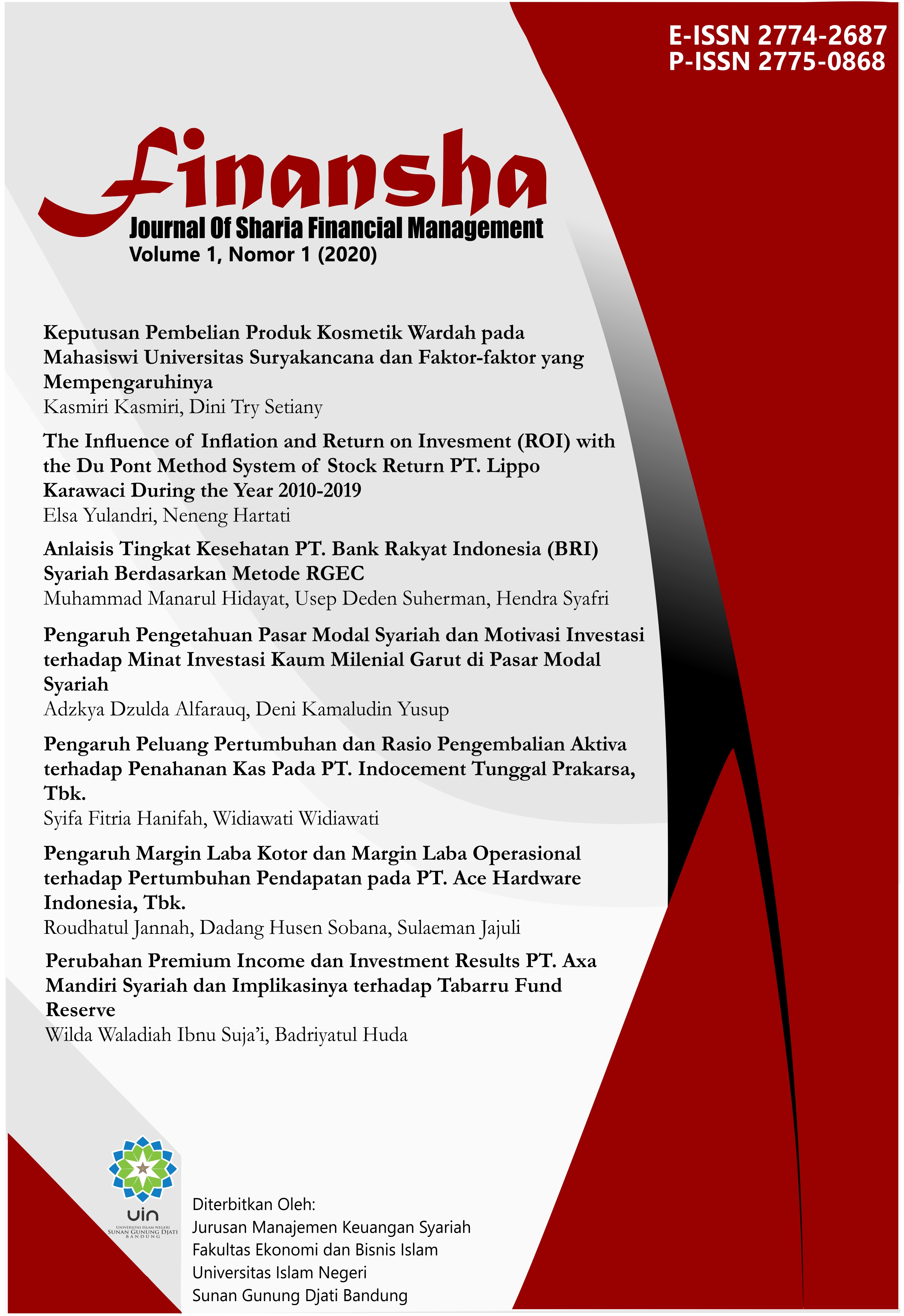ANALISIS TINGKAT KESEHATAN PT. BANK RAKYAT INDONESIA (BRI) SYARIAH BERDASARKAN METODE RGEC
DOI:
https://doi.org/10.15575/fsfm.v1i1.10051Abstract
Abstract
Every bank must have a bank soundness level from all aspects with very healthy criteria, as well as PT. BRI Syariah. Therefore, this article aims to analyze the factors that affect the health level of PT. BRI Syariah uses Bank Indonesia regulations, namely PBI No.13 / 1 / PBI / 2011 and criteria guidelines for using SE. No.13 / 24 / DPNP. In accordance with these provisions, the soundness of a bank is measured by the RGEC method (Risk Profile, Good Corporate Governance, Earnings, and Capital). This article uses descriptive methods and quantitative approaches to determine the health level of PT. BRI Syariah is also compared to two state-owned sharia banks, namely PT. BNI Syariah and BSM. The results showed that using the RGEC method the assessment factors used were NPF, FDR, ROA, BOPO, CAR, and ROE. It appears that PT. The health level of BRI Syariah is still below BNI Syariah and BSM. This indicates that BRI Syariah still has to improve its financial performance to have a healthy rating at rank one, which is very healthy.Â
Â
Keywords: Health Level, RGEC Method, BRI Syariah
Â
Abstrak
Setiap bank harus memiliki tingkat kesehatan bank dari segala aspek dengan kriteria sangat sehat, begitupula dengan PT. BRI Syariah. Maka dari itu, artikel ini bertujuan menganalisis faktor-faktor yang mempengaruhi tingkat kesehatan PT. BRI Syariah menggunakan ketentuan Bank Indonesia yaitu PBI No.13/1/PBI/2011 dan pedoman kriteria menggunakan SE. No.13/24/DPNP. Sesuai ketentuan tersebut, tingkat kesehatan bank diukur dengan metode RGEC (Risk Profile, Good Corporate Governance, Earnings, and Capital). Artikel ini menggunakan metode deskriptif dan pendekatan kuantitatif untuk mengetahui tingkat kesehatan PT. BRI Syariah yang mana juga dibandingkan dengan dua bank syariah milik BUMN yaitu PT. BNI Syariah dan BSM. Hasil penelitian menunjukkan bahwa dengan menggunakan metode RGEC faktor penilaian yang digunakan adalah NPF, FDR, ROA, BOPO, CAR, dan ROE. Terlihat bahwa Tingkat kesehatan PT. BRI Syariah masih berada di bawah BNI Syariah dan BSM. Hal ini menandakan bahwa BRI Syariah masih harus meningkatkan kinerja keuangannya untuk memiliki peringkat yang sehat pada peringkat satu yaitu sangat sehat.
Â
Kata kunci: Tingkat Kesehatan, Metode RGEC, BRI Syariah
References
Editor. (2011, Oktober 25). Peraturan Bank Indonesia Nomor 13/1/PBI/2011. Dipetik Oktober 15, 2020, dari https://www.bi.go.id/id/peraturan/perbankan/Documents/828aa23594154a89aeabab7dc3103805pbi_130112.pdf.
Editor. (2020). Laporan Tahunan Bank Syariah Mandiri. Dipetik Oktober 17, 2020, dari https://www.mandirisyariah.co.id/tentang-kami/company-report/annual-report
Editor. (2020). Laporan Tahunan BNI Syariah. Dipetik Oktober 17, 2020, dari https://www.bnisyariah.co.id/en-us/company/investorrelation/presentationreport/annualreport.
Editor. (2020, Februari 5). Laporan Tahunan BRI Syariah. Dipetik Oktober 17, 2020, dari https://www.brisyariah.co.id/tentang_hubInvestor.php?f=annual
Maramis, P. A. (2020). Analisis Tingkat Kesehatan Bank dengan Metode RGEC pada PT. Bank Mandiri (Persero) Periode 2015-2018. Jurnal Pembangunan Ekonomi dan Keuangan Daerah , 1-32.
Pratiwi, D. D. (2012). Pengaruh CAR, BOPO, NPF, dan FDR terhadap ROA Bank Umum Syariah di Indonesia. Semarang: Universitas Diponegoro.
Rivai, V., & Ismail, R. (2013). Islamic Risk Management for Islamic Bank . Jakarta: Gramedia Pustaka Utama.
Rustam, B. R. (2013). Manajemen Risiko Perbankan . Jakarta: Salemba Empat.
Sugiyono. (2013). Metode Penelitian Kuantitatif Kualitatif dan R&D . Bandung: Alfabeta.
Umam, K. (2013). Manajemen Perbankan Syariah . Bandung: Pustaka Setia.
Downloads
Published
How to Cite
Issue
Section
Citation Check
License
Authors who publish with this journal agree to the following terms:
- Authors retain copyright and grant the journal right of first publication with the work simultaneously licensed under a Creative Commons Attribution License that allows others to share the work with an acknowledgment of the work's authorship and initial publication in this journal.
- Authors are able to enter into separate, additional contractual arrangements for the non-exclusive distribution of the journal's published version of the work (e.g., post it to an institutional repository or publish it in a book), with an acknowledgment of its initial publication in this journal.
- Authors are permitted and encouraged to post their work online (e.g., in institutional repositories or on their website) prior to and during the submission process, as it can lead to productive exchanges, as well as earlier and greater citation of published work (See The Effect of Open Access).

















